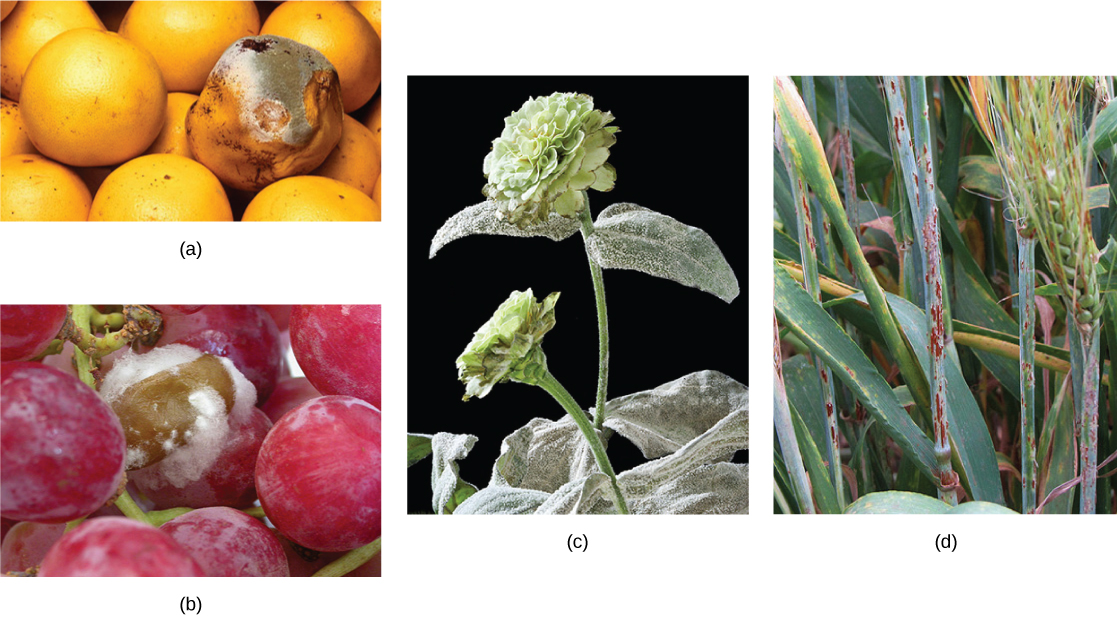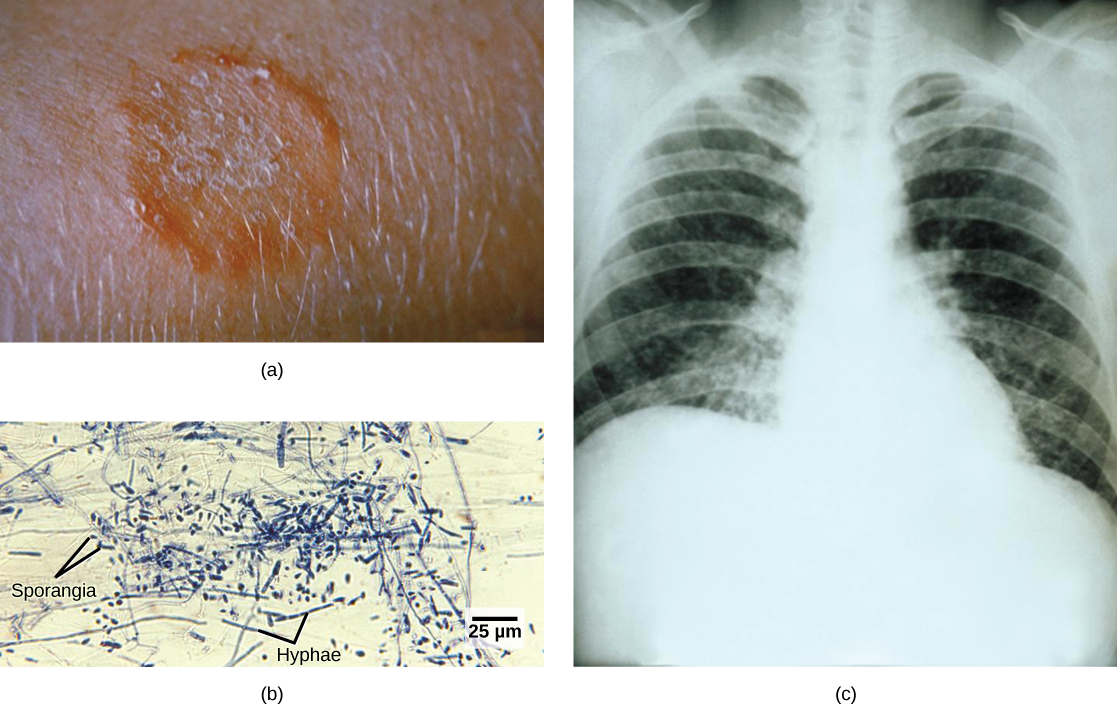| << Chapter < Page | Chapter >> Page > |

Aflatoxins are toxic and carcinogenic compounds released by fungi of the genus Aspergillus . Periodically, harvests of nuts and grains are tainted by aflatoxins, leading to massive recall of produce, sometimes ruining producers, and causing food shortages in developing countries.
Fungi can affect animals, including humans, in several ways. Fungi attack animals directly by colonizing and destroying tissues. Humans and other animals can be poisoned by eating toxic mushrooms or foods contaminated by fungi. In addition, individuals who display hypersensitivity to molds and spores develop strong and dangerous allergic reactions. Fungal infections are generally very difficult to treat because, unlike bacteria, fungi are eukaryotes. Antibiotics only target prokaryotic cells, whereas compounds that kill fungi also adversely affect the eukaryotic animal host.
Many fungal infections ( mycoses ) are superficial and termed cutaneous (meaning “skin”) mycoses. They are usually visible on the skin of the animal. Fungi that cause the superficial mycoses of the epidermis, hair, and nails rarely spread to the underlying tissue ( [link] ). These fungi are often misnamed “dermatophytes” from the Greek dermis skin and phyte plant, but they are not plants. Dermatophytes are also called “ringworms” because of the red ring that they cause on skin (although the ring is caused by fungi, not a worm). These fungi secrete extracellular enzymes that break down keratin (a protein found in hair, skin, and nails), causing a number of conditions such as athlete’s foot, jock itch, and other cutaneous fungal infections. These conditions are usually treated with over-the-counter topical creams and powders, and are easily cleared. More persistent, superficial mycoses may require prescription oral medications.

Systemic mycoses spread to internal organs, most commonly entering the body through the respiratory system. For example, coccidioidomycosis (valley fever) is commonly found in the southwestern United States, where the fungus resides in the dust. Once inhaled, the spores develop in the lungs and cause signs and symptoms similar to those of tuberculosis. Histoplasmosis ( [link] c ) is caused by the dimorphic fungus Histoplasma capsulatum ; it causes pulmonary infections and, in rare cases, swelling of the membranes of the brain and spinal cord. Treatment of many fungal diseases requires the use of antifungal medications that have serious side effects.

Notification Switch
Would you like to follow the 'Concepts of biology' conversation and receive update notifications?